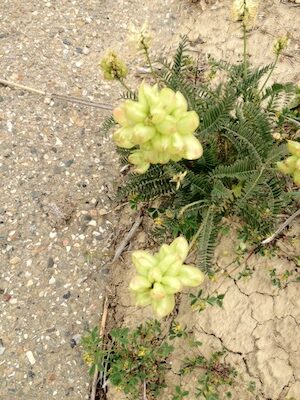
Posted on 17 January 2014
By Arvind Kumar
Water is a scarce and precious natural resource in California, yet two thirds of the water used in homes goes toward watering the yard. What can the home gardener do to use less water, enjoy the garden more, and help the environment? Here are 10 easy tips.
Do you know your monthly water bill? Do you know what is the single largest component of that water bill? In a typical home, only one third of the water is used in the kitchen, bathroom, or laundry; two thirds of the water goes to watering the yard, and the lawn is the thirstiest component.
An estimated 50 million homes in America are landscaped with lawns. That’s a total of 32 million acres of lawn – an area larger than the state of Pennsylvania. Grass clippings are the nation’s largest irrigated crop.
Little wonder then that we are fast running out of water, especially here in California. The state’s second longest river, the San Joaquin, is now a dry and empty channel, all its water locked up behind the Friant Dam in the hills above Fresno. Water rights were carved up long ago, allocated between agribusiness and urban areas, leaving nothing for steelhead or trout. We behave as if there is a cheap and limitless supply: 55% of San Joaquin Valley residents have no water meter and pay a fixed monthly rate, no matter how much water they use.
It is important for each one of us to ponder this and ask what we can do to conserve water in the garden. Here are 10 suggestions:
- Lose the lawn or – if you must have turf – reduce its size. Replace it with water-wise native plants suited to your climate and soil. Locally native plants are not only adapted to survive with available precipitation, they also provide incomparable habitat value (as explained in Appendix 3 of Douglas Tallamy’s excellent book, “Bringing Nature Home”). California is a biodiversity hotspot – it provides a dizzying array of native plants to choose from. Given the slew of recent books on the subject (see “To Learn More”), it is easier than ever before to go native.
- Use mulch to conserve water, keep plant roots cool, and control weeds. A four-inch layer of woodchips decomposes slowly over three to four years, adds nutrients to the soil, and rebuilds the topsoil lost to grading and bulldozing of tract home lots.
- Incorporate shrubs and trees into the garden. Once established, these deep-rooted plants require far less water than shallow-rooted perennials and annuals.
- If you use irrigation, use drip instead of sprinklers. Created in Afghanistan and refined in the US, Germany, and Israel, drip technology makes efficient use of every drop of water. While drip irrigation is a boon for water conservation, be prepared to devote time to regular monitoring and repair.
- Cool your garden by minimizing hardscape elements like concrete, flagstone, and paths, and by creating shade and part-shade areas using trees and large shrubs. Maximize the leaf surface area in the garden using water-wise groundcovers. Chlorophyll-rich leaves absorb sunlight, produce food and plant tissue, and cool the atmosphere at the same time. In a cool garden, plants require less water because they lose less water through transpiration.
- Water plants deeply but less often to encourage the growth of deep roots. Mature, established native plants do not need to be watered more than once a month.
- Water in the cool early morning hours, not in the hot afternoon. Reduce or turn off irrigation during wet winter weeks.
- Choose hand watering over automatic irrigation when possible. The more time you spend with the plants, the more they benefit from the attention, the sooner they establish, and the less water they need.
- Reduce the size of water features (like a pond, stream, or water fountain) to conserve water while still attracting birds and wildlife.
- Investigate grey water options for the garden. Check local ordinances; talk to sustainable landscape professionals. Prioritize water use for food and hygiene. Don’t waste high-quality potable water on producing grass clippings.
You might think that the water savings from one garden can hardly be sufficient to stave off our looming water crisis. What difference does one garden, or one garden owner, make? Well, consider this: These activities scale well. As you adopt these practices, as you share them with your neighbors, friends, relatives, and as they adopt them and share them, the effect multiplies. Environmental awareness in society is growing, and it is only a matter of time before the collective impact becomes significant. Every drop matters, and each one of us counts.
Photo credit: Native plant by Tom Politeo. Story: Sierra Club life member and California Native Plant Society board member Arvind Kumar grows native plants in his Evergreen garden. He can be reached at chhaprahiya@yahoo.com. This story appeared in the Loma Prietan July/August 2012, the newsletter of the Sierra Club’s Loma Prieta Chapter.
Blog Category:
News
